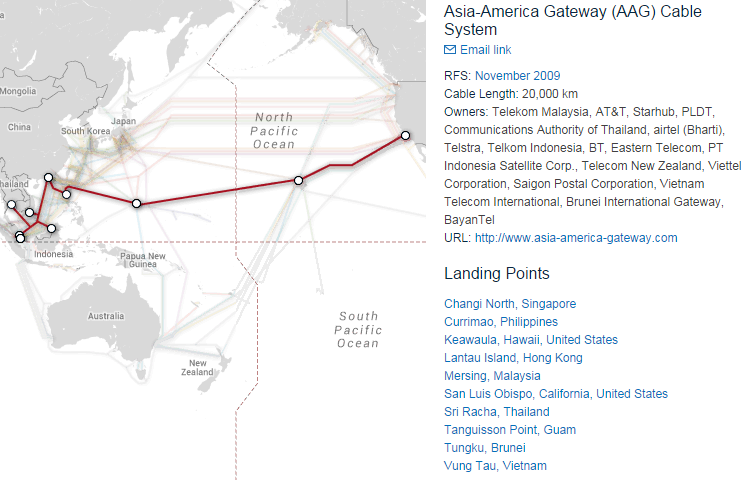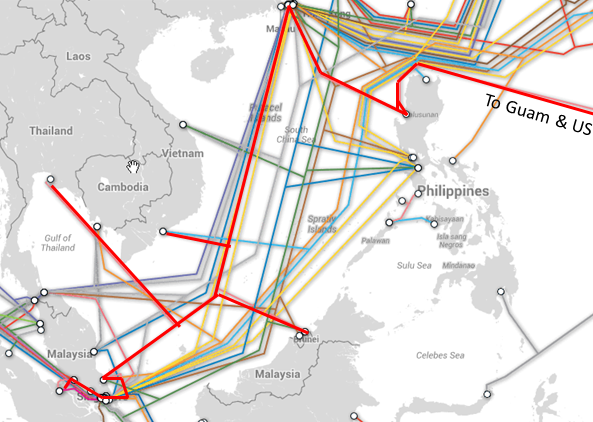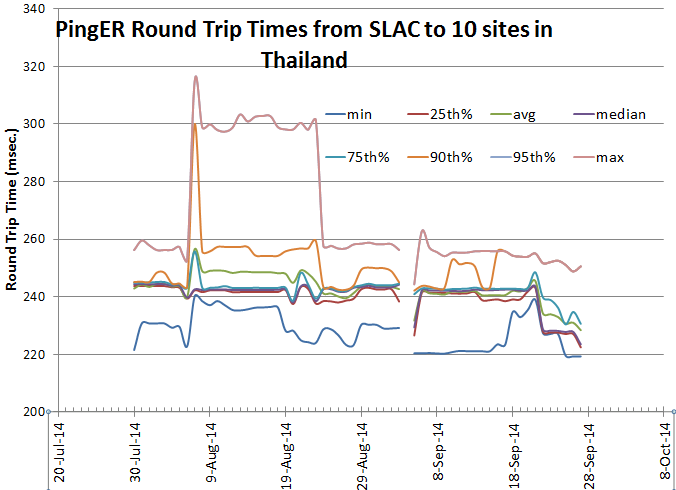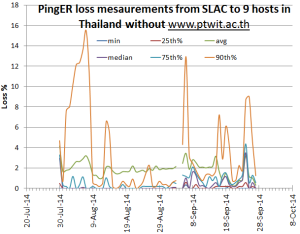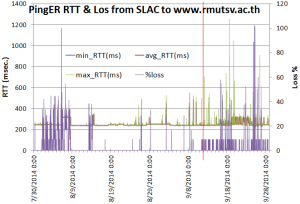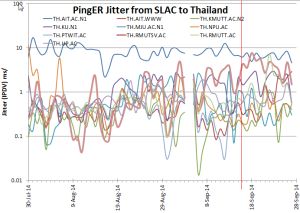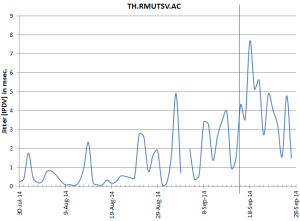Introduction
It was reported in the Rakyat post that the America Asia Gateway (AAG) system cable connecting the Vietnamese coastal city of Vung Tau and Hong Kong occurred somewhere near the latter’s coast at 11:41pm on Monday, Sept 15. The cable route is shown below (from http://www.submarinecablemap.com/).
Looking at the landing points, the detailed map of S. E. Asia where the AAG cable is highlighted in red below, and noting the cut is between Hong Kong and Vietnam, it might be expected this would impact PingER measurements from the US :
- To Thailand
- To Brunei, though there are two other cables connecting Brunei, so the impact may be limited;
- To Central E. coast Sumatra, though there is another cable connecting to central E coast Sumatra;
- To South Vietnam, though there is another cable connecting to South Vietnam.
- To Northern Phillipines.
There are plenty of cables serving other countries so access to them is unlikely to be affected.
Thailand from US
Looking at the graph of RTTs seen from SLAC to Thailand there is little evidence of a marked change in RTTs seen to 10 Thailand hosts.
Similarly evidence is inconclusve for losses, in fact if one looks at the maximum losses it seems to decrease on September 15th. However this is probably misleading since we stopped being able to make measurements to www.ptwit.ac.th on September 15th and this host had consistently the highest losses prior to September 16. Removing this host we get the next graph. If we then focus on the Thailand host (www.rmutsv.ac.th) showing the most impact around September 15th we get the 3rd graph below. Looking at this there is some evidence that there was a change in the jitter of the RTT following Sptemer 15th (red line)
Looking at the jitter (measured as the Inter Packet Delay Variability IPDV) for the Thailand hosts seen from SLAC we get the graph below (rmutsv is identified as the thicker line. We use a log scale to enable visibility of a wider range of values. The graph to the right just show rmutsv but this time on a linear y axis.
